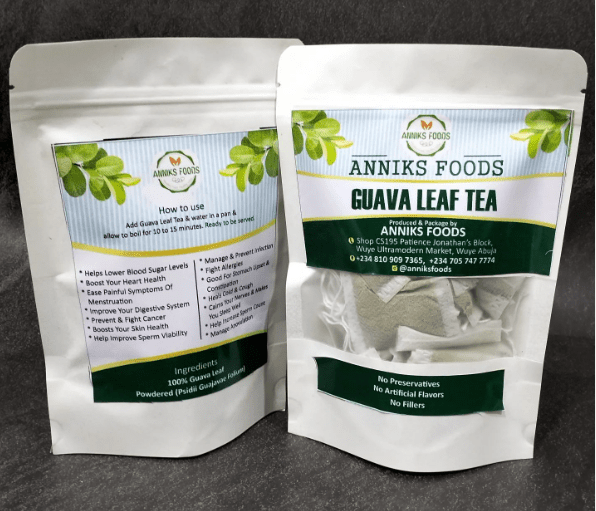Cassava is a root vegetable widely consumed in many countries around the globe.
It provides many important nutrients, including resistant starch, which may have health benefits.
Nevertheless, as with all foods, you should be mindful to consume it in moderation. This is especially true considering that it’s fairly high in calories and contains potentially harmful chemicals.
This article explores the unique properties of cassava to determine whether it’s healthy and safe to include in your diet.

What is cassava?
Cassava is a nutty-flavored, starchy root vegetable or tuber. Native to South America, it’s a major source of calories and carbs for people in many countries. Nigeria, Thailand, and Indonesia are the top cassava-producing countries in the world (1Trusted Source).
It’s grown in tropical regions around the world because of its ability to withstand difficult growing conditions. In fact, it’s one of the most drought-tolerant crops (2Trusted Source).
Although both sweet and bitter varieties of cassava are available, sweet cassava is more common in the United States, where it’s often referred to as yuca, manioc, or Brazilian arrowroot.
The most commonly consumed part of the cassava plant is the root, which is incredibly versatile. You can eat it whole, grated, or ground into flour to use it in bread and crackers.
Cassava root is also used to produce tapioca, a type of starch, as well as garri, a product similar to tapioca.
Individuals with food allergies can benefit from using cassava root in cooking and baking because it’s free of gluten, grains, and nuts.
It’s important to note is that you must cook cassava root before eating it, as it can be poisonous if consumed raw.
SUMMARY
Cassava is a versatile root vegetable that’s widely consumed in several parts of the world. It’s also what tapioca starch is made from. You must cook it before eating it, as the raw form can be poisonous.
Nutrients
A 3.5-ounce (100-gram) serving of cooked cassava root contains 191 calories. Around 84% of them comes from carbs, while the rest come from protein and fat (3Trusted Source).
One serving also provides some fiber and a few vitamins and minerals (3Trusted Source).
The following nutrients are found in 3.5 ounces (100 grams) of cooked cassava (3Trusted Source):
- Calories: 191
- Protein: 1.5 grams
- Fat: 3 grams
- Carbs: 40 grams
- Fiber: 2 grams
- Vitamin C: 20% of the Daily Value (DV)
- Copper: 12% of the DV
- Thiamine: 7% of the DV
- Folate: 6% of the DV
- Vitamin B6: 6% of the DV
- Potassium: 6% of the DV
- Magnesium: 5% of the DV
- Niacin: 5% of the DV
Cassava root is particularly high in vitamin C, an important vitamin that acts as an antioxidant, supports collagen production, and enhances immunity, among other benefits (4Trusted Source).
Plus, it’s rich in copper, a mineral necessary for neurotransmitter synthesis, energy production, iron metabolism, and more (5Trusted Source).
SUMMARY
Cassava is a significant source of carbs. It also provides a little fiber, vitamins, and minerals.
Potential health benefits
Cassava may offer several potential health benefits.
Contains resistant starch
Cassava is high in resistant starch, a type of starch that bypasses digestion and has properties similar to those of soluble fiber.
Eating foods that are high in resistant starch may benefit your health in several ways (6Trusted SourceTrusted Source).
First, resistant starch feeds the beneficial bacteria in your gut and may help reduce inflammation and promote digestive health (6Trusted Source, 7Trusted SourceTrusted Source).
Second, resistant starch has been studied for its ability to improve metabolic health and reduce the risk of obesity and type 2 diabetes. These benefits are likely related to improved blood sugar management, increased feelings of fullness, and reduced appetite (8Trusted Source, 9Trusted Source, 10Trusted Source, 11Trusted Source).
It’s worth noting that processed cassava products like tapioca tend to contain less resistant starch than cooked cassava root. Interestingly, cooling cooked cassava root may further increase its content of resistant starch (12, 13).
Good source of vitamin C
Cassava contains a hearty dose of vitamin C, with 20% of the DV in each 3.5-ounce (100-gram) serving (3Trusted Source).
Vitamin C plays a key role in many aspects of health, including immunity.
In fact, research shows that vitamin C can help protect against oxidative stress and support the function of immune cells in your body (14Trusted Source).
Vitamin C also protects against skin damage and stimulates the production of collagen, a type of protein found throughout your body in your bones, skin, muscles, and joints (15Trusted SourceTrusted Source).
SUMMARY
Cassava is a good source of resistant starch, which supports gut health and blood sugar management. It also contains vitamin C, a key micronutrient that can enhance immune function and collagen production.
Potential downsides
Although there are some benefits of adding cassava to your diet, there are also downsides to consider.
High in calories
Cassava contains 191 calories per 3.5-ounce (100-gram) serving, which is high compared with other root vegetables (3Trusted Source).
For comparison, the same serving size of sweet potatoes has 90 calories, while the same amount of carrots has 35 calories (16Trusted Source, 17Trusted Source).
Its high calorie content is what makes it such an important staple crop in many countries.
However, keep in mind that consuming more calories than you burn can contribute to weight gain over time (18Trusted Source).
For this reason, it’s best to enjoy cassava in moderation as part of a balanced diet. Generally, try sticking to around 1/3–1/2 cup (73–113 grams) per serving.
Can be harmful if consumed raw
Cassava may be dangerous if consumed raw, in large amounts, or if prepared improperly.
Raw cassava contains chemicals called cyanogenic glycosides. If eaten, these can release cyanide into your body (19Trusted Source, 20Trusted Source).
Regularly consuming cyanogenic glycosides or eating them in high amounts increases the risk of cyanide poisoning. Cyanide poisoning is associated with impaired thyroid and nerve function, paralysis, organ damage, and even death (21Trusted Source, 22Trusted Source).
Because protein helps rid the body of cyanide, those who have an overall poor nutrition status and low protein intake are more likely to experience these effects (23Trusted Source).
Soaking and cooking cassava decreases the content of these harmful chemicals. Plus, pairing the root vegetable with a well-rounded diet that’s high in protein may reduce your risk of adverse health outcomes (22Trusted Source, 23Trusted Source).
Processed versions may be lower in nutrients
Processing cassava by peeling, chopping, and cooking it significantly reduces its content of vitamins, minerals, fiber, and resistant starch. Still, cooking the root before consumption is necessary to avoid side effects (24Trusted Source).
Some older studies have found that boiling cassava root retains more nutrients, compared with other cooking methods like roasting or frying. The exception is vitamin C, which is sensitive to heat and easily leaches into water (24Trusted Source).
Furthermore, it’s worth noting that some popular, processed forms of cassava, including tapioca and garri, have limited nutritional value.
For example, tapioca pearls, like those often used in bubble tea, are high in calories but lack fiber and other important micronutrients (25Trusted Source).
Therefore, it’s best to stick to less processed varieties of cassava whenever possible and opt for boiled dishes to maximize the nutritional value.
SUMMARY
Cassava is relatively high in calories and must be prepared before eating to avoid adverse health effects. Some highly processed varieties like tapioca are low in important micronutrients but high in calories.
How to enjoy
Cassava is generally considered safe when prepared properly and enjoyed in moderation.
While cases of cyanide poisoning associated with this root are rare, it’s still important to cook it properly to prevent adverse side effects (22Trusted Source).
Here are some ways you can make cassava safe to eat (22Trusted Source, 23Trusted Source):
- Peel it. The peel of cassava root contains most of its cyanide-producing compounds, so it’s a good idea to discard it before cooking and eating the vegetable.
- Soak it. Soaking cassava by submerging it in water for 48–60 hours before cooking it may reduce its content of harmful chemicals.
- Cook it. Since harmful chemicals are found in raw cassava, it’s essential to cook it thoroughly before eating, for example by boiling, roasting, or baking it.
- Pair it with protein. Eating protein along with cassava may be beneficial, as this macronutrient helps rid your body of toxic cyanide.
- Maintain a balanced diet. You can prevent adverse effects from cassava by including a variety of foods in your diet rather than relying on it as your main source of nutrition.
There are many ways to incorporate cassava into your diet.
For example, you can use it to make snacks and side dishes. It’s commonly sliced and then baked or roasted, similarly to how you’d prepare potatoes.
Additionally, you can mash it or add it to stir-fries, omelets, and soups. It’s also sometimes ground into flour and used in grain-free bread, crackers, tortillas, and pancakes.
Plus, you can enjoy it in the form of tapioca, the starch extracted from the root through a process of washing and pulping. Tapioca is commonly used as a thickener for puddings, pies, and soups.
Other popular dishes that feature cassava include:
- Cassava cake: a Filipino dessert made with grated cassava root
- Farofa: a Brazilian side dish that uses toasted cassava flour
- Fufu: a dough-like food eaten in many African countries, made from fermented and puréed cassava
- Tapai: a fermented food often enjoyed in Southeast Asia, prepared from cassava, rice, or other starches
- Kabkab: a traditional Filipino wafer made from ground cassava
Note that products made from the root, such as cassava flour and tapioca, contain little to no cyanide-inducing compounds and are safe to eat.
SUMMARY
Cassava is typically used similarly to how you’d use potatoes and makes an excellent addition to many dishes. It can also be ground into flour or used as tapioca starch.
The bottom line
Cassava is a type of root vegetable. It’s considered a staple food in many countries thanks to its unique ability to withstand difficult growing conditions and relatively high calorie density.
In addition to being versatile, it’s a good source of resistant starch and vitamin C.
However, it requires proper preparation to avoid adverse health effects. Particularly, avoid eating it raw. It’s also worth noting that processed varieties like tapioca may be lower in important micronutrients.
Still, cassava root makes a great addition to stir-fries, soups, baked goods, and desserts and is frequently featured in traditional dishes around the globe.
Healthline.com
Stay ahead with the latest updates!
Join The Podium Media on WhatsApp for real-time news alerts, breaking stories, and exclusive content delivered straight to your phone. Don’t miss a headline — subscribe now!
Chat with Us on WhatsApp






